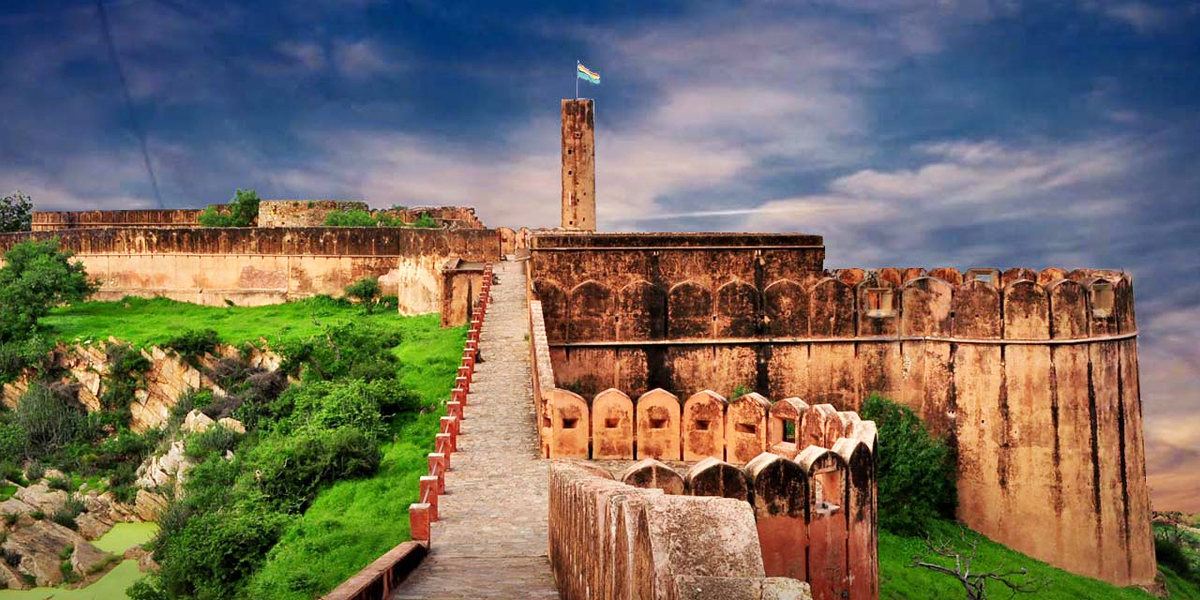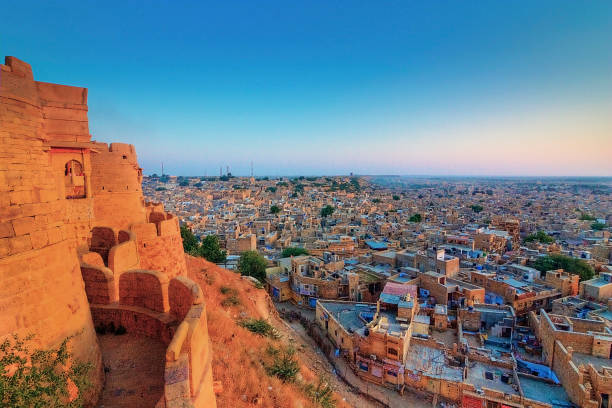Jaigarh Fort in Jaipur
The huge and stunning construction Jaigarh Fort was built during the period of Jai Singh ll between 15th to 18th centuries using the red sandstones. The fort is constructed to store the weapons and other military utilities.

Located at a distance of 15 kms from the Pink City of India, Jaipur the magnificent royal construction Jaigarh Fort grabs the attention of travellers with its unique approach.
The fort was built by Jai Singh II in 1726 to protect the Amer Fort and its palace complex and was named after him. This almost-intact fort is surrounded by huge battlements and is connected to the Amer Fort (also called 'Amber' Fort), with subterranean passages. Originally built to protect the Amer Fort and the palace within the complex, the Jaigarh Fort is architecturally similar to the Amer Fort, and offers a panoramic view of the city of Jaipur. The fort houses the world's largest cannon on wheels, a majestic palace complex and the assembly hall of the warriors known as 'Shubhat Niwas' along with a museum and an armory.
Jaigarh Fort in Jaipur was built by the ruling King Jai Singh II in the year 1726. With an expansive layout overlooking Amer Fort, the fort boasted of exuberance and royalty. It was built to be a defensive structure, than a palace itself, by the king. The highlight of the fort is the connecting underground pathway between Amer Fort and Jaigarh Fort to help people reach safety, in case of an attack.
The fort provides an excellent view of the Aravalli Range and Maota lake, and is actually built atop the Hill of Eagles, also known as Cheel ka Teela.
It served as the residence of many kings and was also used to store weapons, artillery and ammunition of the Rajput rulers along with other military utilities.
It was said to be the main cannon foundry for the Mughal rulers. The cannon outpost was protected during the many consecutive wars that broke out in the Mughal dynasty in 1658, until the protector Dara Shikoh was beaten in battle and slain by his own brother Aurangzeb.
During the reign of the Mughal Emperor Shah Jahan, Jaigarh Fort came to be known as the world’s most efficient cannon foundry. It was mainly given this title because of the presence of massive iron ore mines located along the vicinity of the fort. The wind tunnel of the cannon foundry is said to suck in the hot air from outside and help in melting metal to build the cannons, with temperatures inside soaring as high as 2400 °F.
With the help of precision gear systems driven by four pairs of oxen, the device was used to hollow out the cannon barrels. The Rajputs became famous for their development of this device.
Jaigarh Fort is a highly fortified fort which has huge thick walls made up of red sandstone. The fort has different palaces, courtrooms.
The fort has a watchtower from where you can enjoy an amazing view of the surrounding area.
Dungar Darwaza is the main entrance of the fort. There are two temples within the fort precincts, one is the Ram Harihar temple of the 10th century and the other one is the Kal Bhairav temple of 12th-century vintage.
Due to the abundance of iron ore mines in the proximity of the fort, the Jaigarh Fort became one of the richest cannon foundries in the reign of Mughal Emperor Shah Jahan.
The Former Emperors of the Fort namely, Sawai Bhawani Singh and Major General Man Singh II also served as the top Officials in the Indian Army, after the country became Republic.
Jaivana Cannon in Jaigarh Fort: Though Jaivana was the largest cannon of its time, it was never used. Courtesy, Friendly relationships between Rajput Rulers of Amber and Mughals. Jaigarh Fort was not the residential fort of Kings of Jaipur but was an artillery production unit of Rajputs. The cannon was fired only once with a charge of 100 kilograms (220 lb) of gunpowder and when fired covered a distance of about 35 kilometers.
October to March are ideal months to visit Jaigarh Fort and other part of Jaipur city. These months are relatively cooler and you can enjoy walking around the palaces and forts easily. It is less stressful and tiring as compared to the blistering hot summer months from April to September.
The Fort is open from 9:00 am to 4:30 pm daily. It is advisable to enter the fort at least 3 hours in advance to peacefully have a look and click photographs.
Entry fee for Indians- Rs. 35 per person.
Entry fee for foreigners- Rs. 85 per person.
